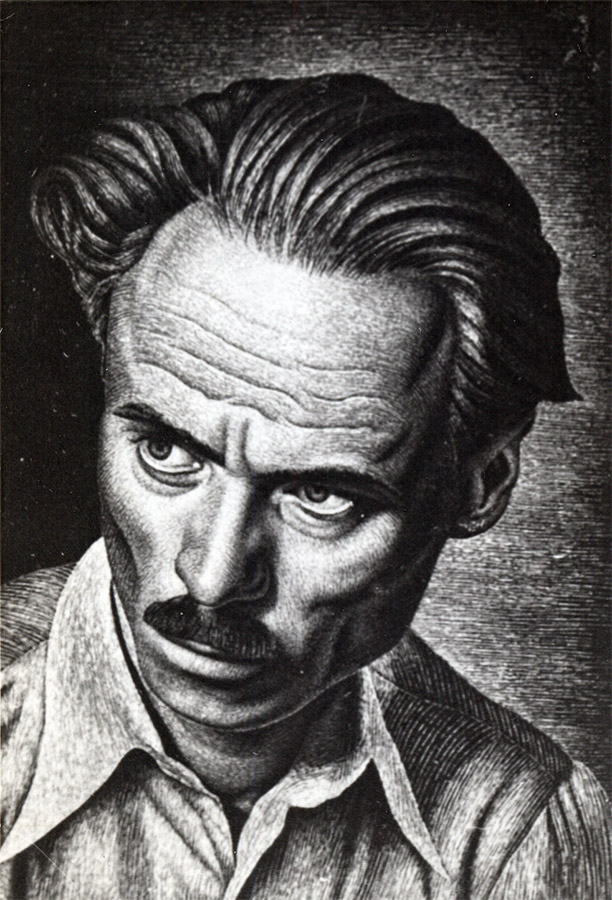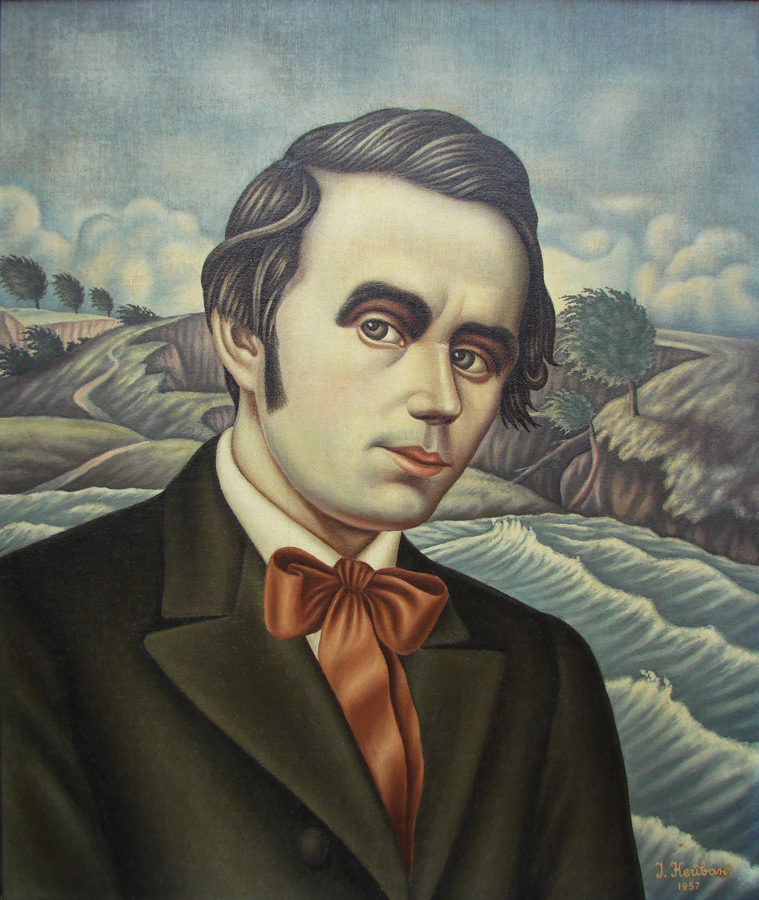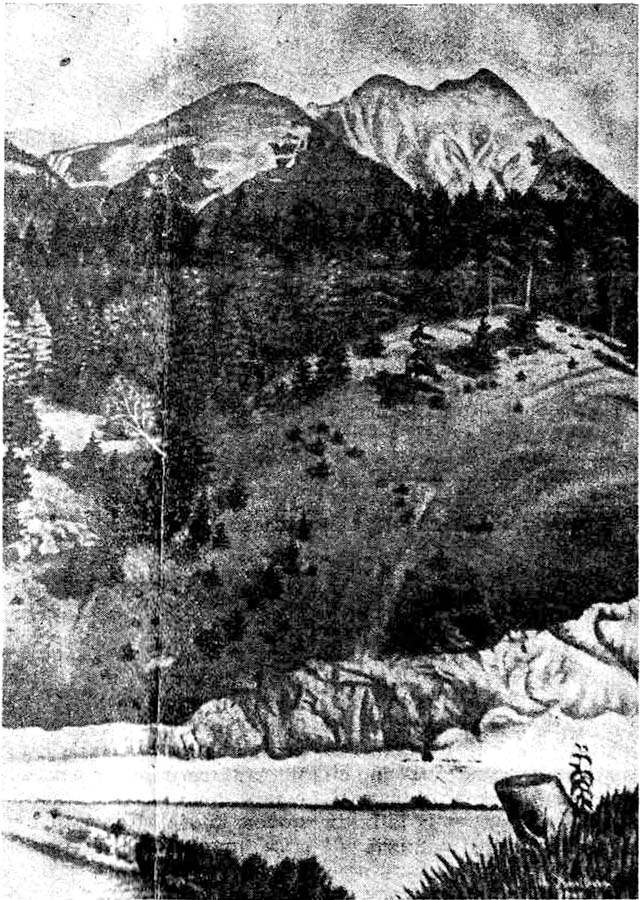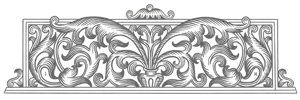Ivan Keywan: 25 Years of Creative Work
Volodymyr Sichynsky
Translated from the original Ukrainian by Z. Keywan

The graphic arts, which have played a leading role in the Ukrainian cultural process of our era, have given us eminent artists recognized around the world. These artists created their own artistic school, characterized by a high level of creative and technical skill and originality of expression. Constant attacks against this school under the Soviets and unfavourable conditions under other regimes slowed its normal development, with especially unfortunate effects after the last war.
We are witness to the fact that younger artistic talents are dispersing and sinking in foreign seas. In pursuit of so-called “modernity,” they adapt to the fashions of their surroundings, thereby losing their national identity and becoming second-rate contributors to a foreign art.
Ivan Keywan is one of those few and unbreakable individualities who, having brought out of their homeland the greatest achievements of their eminent predecessors, hold high the flag of Ukrainian art and continue to create in the spirit of the Ukrainian school. Moreover, his creative work is clearly individual, with very particular characteristics in content and form of artistic expression. He is a born graphic artist, who brings a purely graphic understanding and treatment to all branches of the plastic arts, above all, portraiture, but also painting, particularly landscape, but also monumental, painting.
Ivan Keywan was born on September 16, 1909 [1907] in the village of Karliv, Sniatyn county, in a peasant family that had always been linked to our beautiful Pokuttia region. The Keywan family was related to Vasyl Stefanyk’s family along the Stefanyks’ female line. After graduating from high school in Kolomea, Keywan studied in O. Novakivsky’s art school in Lviv in 1927-28, and in 1932-37, at the Karkow Academy (graphic art) and the Academy of Art in Warsaw, where he also studied art history.
The artist showed exceptional talent for drawing and graphic work even while still in high school; at the Krakow and Warsaw Academies he frequently won first and second prizes. Observers were amazed by the precision of his execution; in engraving techniques, he approached such perfection that his works could scarcely be regarded as having been executed with a human hand.
As a nationally-conscious civic and cultural activist, he sought out contacts with Ukrainian artistic and cultural organizations. In Warsaw, he was an active member of the “Spokiy” artists’ association, with which he first exhibited his works in spring 1933, that is, exactly 25 years ago. Later he took part in the young artists’ group of the Association of Independent Ukrainian Artists and the Ukrainian Artists Association (USOM).
After completing his art studies, he worked in 1938-1944 in Lviv, Kolomea and elsewhere, as a teacher of art in high schools and arts and trades institutes. During the last few years, 1941-1944, he taught in Kolomea in the high school and the Technical Lycée, where he taught drawing and art history. After leaving Ukraine, he continued his teaching and artistic activities in the refugee camps in Germany. While living in Bavaria, he executed a major series of Alpine landscapes in water colour, tempera and oil.

In Germany, he took part in many Ukrainian and general art exhibitions, particularly in Amsterdam and Paris. German, French, British and American art experts noted in particular the high level of his graphic work. His design for Ukrainian Plast [Scout organization} postage stamps was noted in one of the critiques as “an outstanding achievement in the philatelic and artistic worlds, due to the clarity of the composition and unrivalled technical execution.” We should note here that while still in Ukraine, the artist designed a whole series of postage stamps, banknotes and certificates for the future Ukrainian state. These faultlessly executed colour graphic works, into which the artist invested vast amounts of work and skill, were destroyed in the chaos of war.
After coming to Canada with his family (wife and two children) in 1949, Keywan settled permanently in the North – in Edmonton – where he works to support his family as a painter in a chemical company. But the artist also finds the time and opportunity to work with great intensity on “pure” art. Since coming to Canada, Keywan has executed a large number of graphic works for a variety of occasions, including certificates and printers’ and publishers’ insignia; designed more than a dozen publications, particularly book covers; produced more than a dozen portraits; and painted three Ukrainian churches. He is always active in Ukrainian and general Canadian art exhibitions (Edmonton, Winnipeg, Toronto, Hamilton, Saskatoon, Montreal), thus acquiring a name and an assured place among Canadian artists. Suffice it to say that over a period of about eight years, Keywan won 12 Canadian first prizes, particularly for his graphic works, as well as a rare Special Award in 1956 for his tempera work “Rock.” We often see our artist’s name in Canadian English-language publications, and in particular, photographs of his works (e.g. C-I-L Contact, October 5, 1956). In this respect, Keywan is in first place among Ukrainian artists in Canada.
The artist has also contributed to the organization of Ukrainian artistic life in Canada, including the establishment of the Ukrainian Artists Association (USOM), particularly the Edmonton branch, which was founded in 1957.

Keywan began his writing career in 1927, initially as a short story writer, poet and journalist, publishing his works under different pseudonyms in Ukrainian newspapers in Halychyna. Now, in Canada, he has built a reputation as an art expert and journalist, publishing valuable, deeply thought-out articles and studies on Ukrainian and international art, particularly from the Renaissance era. Concerning Ukrainian artists, he has written very valuable works about D. Levytsky, T. Shevchenko, Yu. Narbut, O. Novakivsky, P. Kovzhun and others. Keywan’s longer studies of Ukrainian book design and “lost treasures” testify to the author’s thorough knowledge of Ukrainian art and his ability to grasp and synthesize the most important issues. Keywan’s reviews of books and exhibitions also demonstrate his skill, similar to that seen in his graphic works and portraits, in synthesizing and conveying the key content and ideas of what he has read and seen. In this respect, Keywan as a publicist is a rare phenomenon in contemporary Ukrainian writing.
Keywan’s portraits are a particular aspect of his creative work having exceptional significance for our history, culture and art. Until now, we always lacked good portraits of our most prominent activists and this had an adverse effect on text books and “popular” publications. Those portraits that were published – uneven in quality or simple sketches – were usually not suitable for print or distorted by poor reproduction techniques.
Keywan’s graphic portraits have and will continue to have timeless value. They are deep, thoughtful studies of the subjects, which synthesize their psychological qualities. They convey the subjects’ permanent and most characteristic features. For this reason, they are more perfect and significant than realistic-naturalistic portraits, which, like photographs, capture just one, random and changeable facial expression or experience.
Exceptionally valuable, from a historical and artistic perspective, are the portraits of Gen. M. Tarnavsky, Olena Kysilevska and Todos Osmachka. The portrait of T. Shevchenko at a young age against the background of the Dnipro (“Reve ta stohne”) is of exceptional significance, differing from the standardized, simplistic, so-called popular portraits of “father Taras” in a sheepskin coat and hat. The portrait of Metropolitan A. Sheptytsky on the Plast stamp, executed in 1948, and his portrait on the poster of 1952 are among the best portraits of the great Metropolitan. The portrait of Yuriy Narbut also holds a special place, being the first such portrait executed by a Ukrainian artist. Among the newest portraits we note those of Prof. T. Pavlychenko, writer S.R., Prof. B. Mygasiuk, composer Dr. Z. Lysko, dramatic performer Yu. Genyk-Berezovsky and others, all of which make a valuable contribution to contemporary Ukrainian culture.
In their formal aspects, the portraits are all executed using graphic techniques, with exceptional precision and high technical skill and a clean and confident line, which enhance the value of their contents.
The artist’s self-portraits and portraits of his family are very rare examples of objective, even critical, depictions, especially as applied to his own person. There is nothing in them that is artificial, posed or flattering; they are honest in their faithfulness and openness. The portrait of the artist’s wife captivates the viewer by its directness and evokes a sympathetic response. No wonder the artist believes that he owes his achievements in great measure to his wife. The artist’s self-portraits convey psychological characteristics with a depth and penetration that is possible only for the artist himself, who knows himself better than anyone.
The artist’s landscapes are suffused with the spirit and character of the scene and in their way, are psychological studies of nature. The artist seeks to find pure form using a somewhat stylized expression. These works reflect the artistic directions that were dominant during his academic studies, in particular, Gothic naturalism, early Renaissance and neo-classicism (in sculpture). The latter is most evident in the artist’s portraits. However, Keywan’s works are characterized by greater monumentality and synthesis and have their own individual style. In the landscapes, particularly, a personal, original, warm palette can be seen.
Apart from portraiture, a second area in which the artist shines is that of documents and commemorative graphic works in general. Here Keywan demonstrates not only exceptional compositional skills and ingenuity, but also a refined understanding of the Ukrainian style in form and colour. We also see his superior graphic technique, which shows unparalleled precision and accuracy. Among these documents are the certificate of the “Central Apostolic Exarchate of Western Canada” and certificates for Col. A. Melnyk and Gen. M. Kapustiansky. The lettering is outstandingly clear and precise, in formal terms, harks back to the Ukrainian style of the famous Narbut.
We can only hope that Keywan will produce more works in the field of commemorative graphics, especially stamps, emblems and insignia, for which the artist has particular talent.
As an art expert and critic who stands out for the high intellectual level of his writings, Keywan is working in a field that is wide open. Here, as in our homeland, there is a catastrophic shortage of writings on artistic subjects. Therefore, we must particularly value Ivan Keywan’s work, which shows every indication of continued successful development.
![]() Download this article as a PDF (68kb)
Download this article as a PDF (68kb)
![]() Ukrainian original scan as PDF (491kb)
Ukrainian original scan as PDF (491kb)
Volodymyr Sichynsky, "Ivan Keywan: 25 Years of Creative Work," Novyi Shliakh May 19, 1958 (English trans. by Zonia Keywan).

